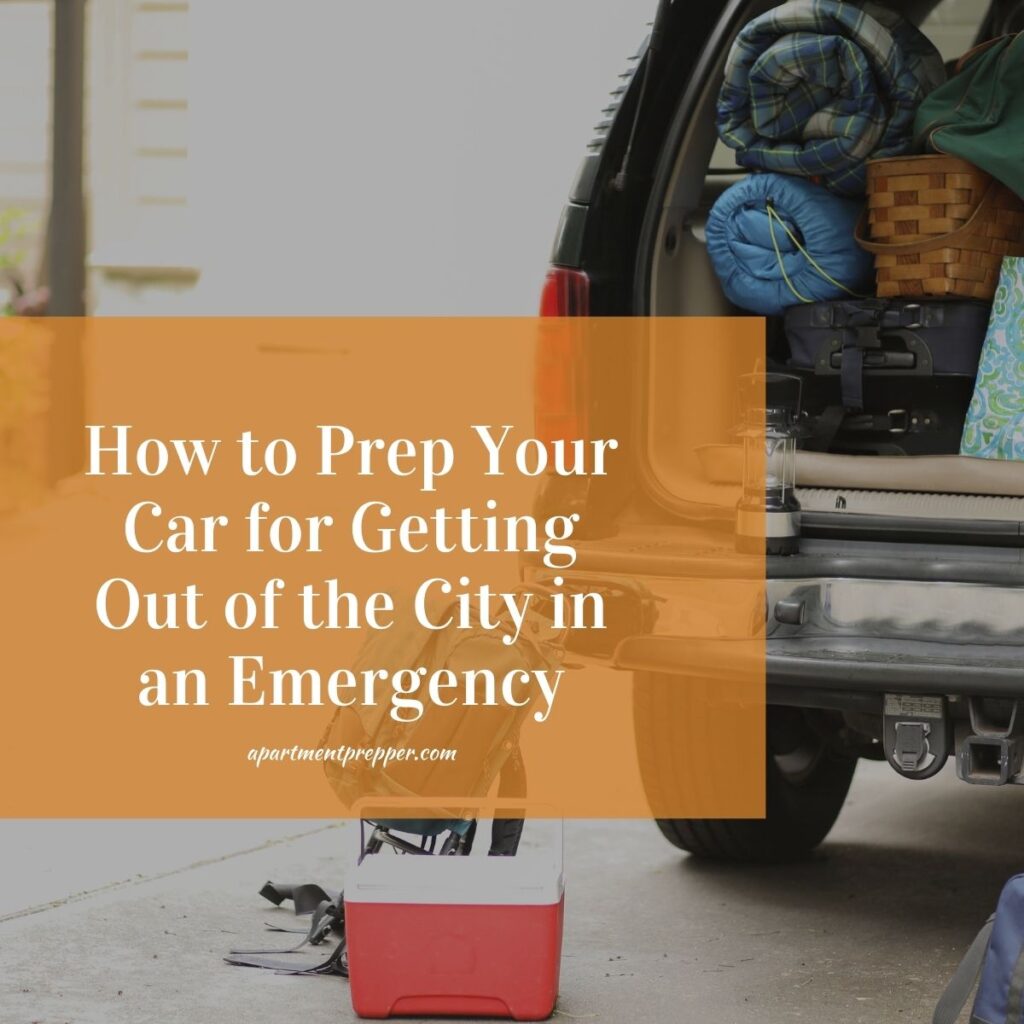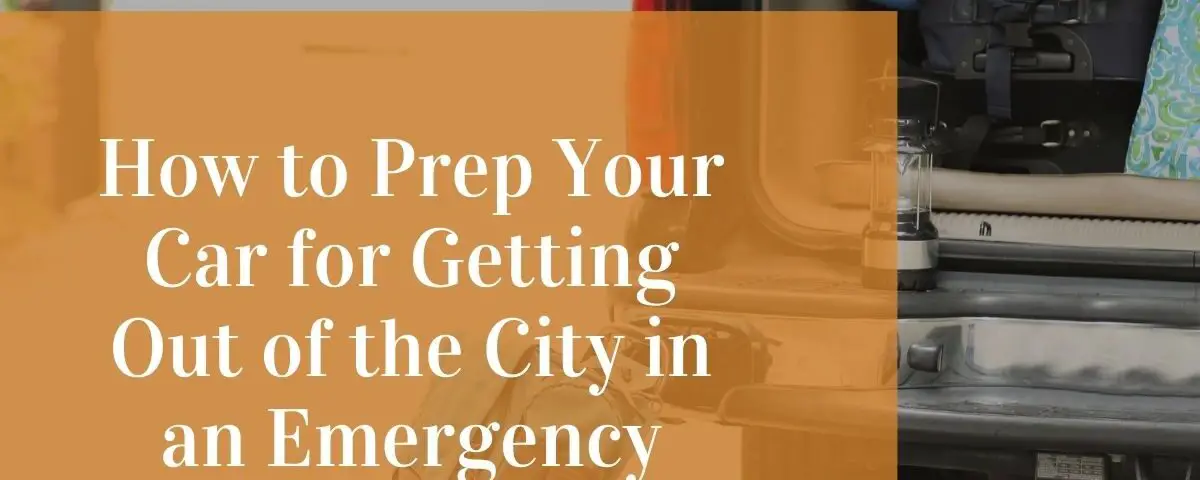Written by Martin Banks
If you learned anything from 2020, it should be that life can turn on a dime. You need to prepare for the unexpected. The next disaster might not be a pandemic where authorities ask you to stay home — so are you prepared to flee when seconds count?
You won’t have time to remember everything if you wait to pack on the fly, and you certainly can’t risk a ride that isn’t up to the task. Here’s how to prep your car for getting out of the city in an emergency.
1. Prepare Your Car
Ensure your vehicle is road-ready at all times. This tip means tending to all scheduled maintenance and performing routine inspections if you live in a state that doesn’t require annual mechanic’s certification by law. It’s also wise to install a tow hitch on your car, even if you can’t drag much. A small trailer laden with gear can make the difference between sleeping rough and having shelter.
If you have a heavy-duty pickup truck, you’re better off for hauling purposes than someone with a Mini Cooper. However, consider making weighty rides smoother by installing coil springs. These devices absorb the energy from the added pounds, making each bump less jarring.
2. Coordinate Communication
The pesky thing about emergencies is that they rarely strike when you’re kicking it on your couch, waiting for a little excitement. They happen anytime, anywhere. As the residents of Paradise, California, discovered, they can strike during the day while you and your family conduct your daily routines.
Therefore, you need a way to communicate with loved ones and coordinate your flight. Ensure each family member has a cellphone, two charging cables and a backup charger. Discuss where you will meet if disaster strikes while you’re at work and the kids are at school. Contact your city or county office to determine where they likely will locate shelters if hurricanes or fires occur.
3. Map Your Escape Plan
Where will you go if the worst occurs, and how will you get there? Having a plan ensures you don’t waste precious minutes deciding what to do in the heat of the moment. Will you head to grandma’s house in the country or your favorite remote camping spot to regroup? Decide now, not when panic clouds your mind.
You don’t want to discover that a construction project has the highway torn apart while you’re stuck in one lane, unable to move. Download one or more apps for avoiding traffic and test-drive them to see which works best in your region.
4. Pack a Go-Bag for Everyone
Everyone in your family should have a go-bag in their closet, all packed and ready to toss in the trunk. Forget all those high-school hypotheticals about what you’d grab in a fire — when seconds count, you take what you have in hand.
Your go-bags should contain one or two changes of clothing for hygiene and layering purposes. Include copies of documentation to a flash drive, such as the following:
● Driver’s license
● House deed
● Will
● Proof of insurance
● Medical history and immunization records for children
● Passports, Social Security cards and birth certificates
You’ll also want to include several day’s worth of hygiene supplies and prescription medications. It’s wise to ask your doctor for an emergency stash that you can keep for travel purposes.
5. Stow Away Your Shelter
Here’s where that tiny trailer comes in handy, although you can make do with a lockbox in your pickup. If you go the former route, choose an enclosed model to protect your stash from sticky fingers.
You can’t guarantee how quickly authorities will erect emergency shelters or what conditions will be like. If possible, store your camping gear in your vehicle at all times so you don’t risk forgetting your tent stakes in the garage.
6. Restock Your First-Aid Kit
You should always carry a basic first-aid kit in your vehicle. It’s not enough to invest in a one-time purchase and call it good. As supplies dwindle, you need to replace them.
Take stock every few months. Your kit should contain the following:
● Absorbent compress dressings
● Adhesive bandages in various sizes
● Antiseptic ointment and wipes
● Adhesive cloth tape
● Sterile gauze pads
● Large triangular bandages/wraps
● Insect repellent and sting ointment
● Non-latex gloves
● Heat and cold packs
● Pain relievers
7. Keep Everyone Warm and Fed
Remember the old saying, “An army marches on its stomach?” Your family is no different in a survival situation, and cries of “I’m hungry” are no fun when disaster shuts down the golden arches. Feeling chilly can lead to complaints of discomfort, and too much cold can turn deadly.
Carry healthy, nonperishable snacks in your car and several blankets. Items like crackers offer instant energy, while protein snacks like nuts add lasting nutrition and power.
8. Water, Water Everywhere
According to the Mayo Clinic, adult females need approximately 11.5 cups of fluid daily while men need 15.5. However, bear in mind that these averages do not account for individual weight variations or environmental conditions. You do dry out more quickly in the desert.
Stash a gallon of water per person per day in your vehicle. Jugs can eat up space, so consider investing in a large rectangular cooler that fits your cargo.
Prep Your Car With These Tips
You might not want to think about prepping your car for getting out of the city in an emergency. However, you’ll be grateful for your forethought if the worst strikes when you least expect it.
About the Author:
Martin Banks is the founder and Editor-in-Chief of Modded where he covers survival, the outdoors, gear, cars, and more.
**************************************************************************************************
We are an affiliate of Amazon.com, which means we received a small commission if you click through one of our Amazon links when you shop, at totally no cost to you. This helps keep the lights on at the blog. Thanks!



One comment